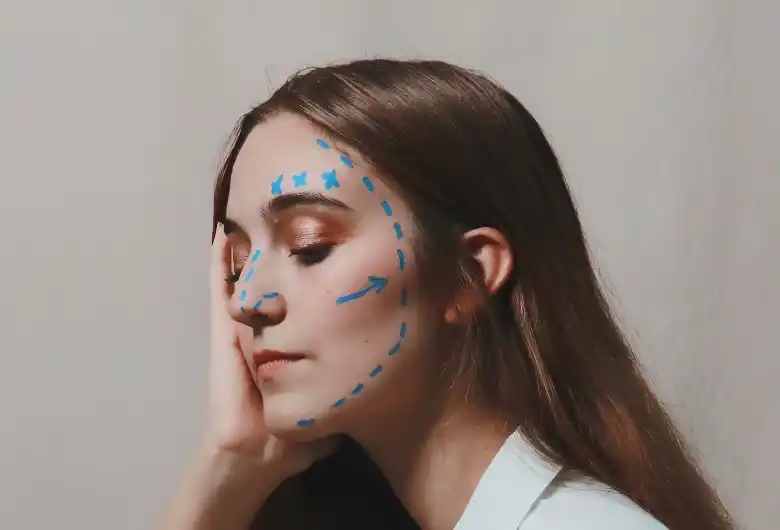Achieving a more youthful look requires a dedicated commitment, but there are various options available for reversing signs of aging and preserving a vibrant appearance. Before deciding on the most suitable procedure for you, thorough research is essential. Understanding the techniques employed and evaluating potential outcomes associated with each option is crucial, as each procedure may yield different results. Attaining a youthful glow is feasible with the right knowledge. Explore some of the top treatments to help maintain your youthful appearance.
1. Botox Injections
Botox is probably the most popular rejuvenation procedure. However, many people require a clearer understanding of Botox and its workings. The poor reputation of the early procedures stems from their ‘plastic’ outcomes. However, doctors have mastered the procedure today, and the outcomes appear more natural.
The treatment involves using a fine needle to inject a mild toxin into specific areas. The toxin paralyzes the tissues and the tiny muscles, eliminating scars. Botox is one of the most effective facial rejuvenation treatments around.
2. Laser Skin Resurfacing
Laser skin resurfacing is a cutting-edge invention that helps eliminate skin problems and aging signs. The technology can aid in the reduction of scars, blemishes, and facial wrinkles. It also helps remove warts and acne scars while repairing sun damage and enhancing the complexion. Mostly, surgeons can use either ablative or non-ablative laser treatments.
The ablative treatments involve using a laser to remove the upper layer of skin with sun damage and other superficial blemishes. While doing so, it promotes the production of collagen beneath the skin. After healing, the skin becomes firmer and smoother. On the other hand, the non-ablative laser treatment enhances skin appearance without causing skin damage.
3. Microneedling
The non-invasive nature of the procedure and its remarkable outcomes make it the perfect choice. The resurfacing treatment helps to revitalize your skin from the inside out. It works well to diminish stretch marks, fade scars, and smooth out fine lines. Professional establishments like The Luxe Room in Denver have modified versions of this treatment, rendering even better results.
4. Soft Tissue Fillers
Fillers are a different procedure that has gained popularity in the facial rejuvenation market. These take various forms and operate in diverse ways, but they all aid in increasing volume. The majority of fillers contain substances that the body can resist. Some of them, like hyaluronic acid, occur naturally and are completely reabsorbed by the body. Others include gels that contain tiny beads that stimulate collagen growth once the gel is absorbed.
Also Read – Expert Speaks – Dr. Olga Bachilo Answers Your Questions About Plastic Surgery
5. Intense-pulsed Light Treatment
Intense-pulsed Light, often known as IPL, is another well-liked non-invasive procedure. It employs light similar to laser therapy, except it can treat more extensive areas and uses a variety of light wavelengths. The powerful light penetrates the skin, destroying deeper colors beneath the surface while protecting the top layers. The result is tighter pores and more elastic skin with restored vigor due to collagen growth after the treatment.
You can restore youthful skin with treatments like laser skin resurfacing, IPL, Botox, and micro-needling. Sometimes, you may look older than you are because of some blemishes resistant to skin care regimens. In such cases, some of these treatments can do wonders for you.
The field of cosmetic surgery is constantly evolving, with new techniques and technologies being developed all the time. Some of the latest trends in cosmetic surgery are Body contouring, Combination procedures, Fat grafting, and Minimal incision surgery. It’s important to note that while these trends are popular, not all may be appropriate or suitable for everyone. It’s essential to consult with a qualified and experienced plastic surgeon to determine which procedure is right for you.
Frequently Asked Questions
What are the most common types of cosmetic surgery?
Some of the most common types of cosmetic surgery include breast augmentation, liposuction, rhinoplasty, facelift, tummy tuck, and eyelid surgery.
Who is a good candidate for cosmetic surgery?
A good candidate for cosmetic surgery is someone who is in good health, has realistic expectations, and has a specific aesthetic goal in mind. Age is not necessarily a factor, but it’s essential to ensure that the person is emotionally mature enough to handle the changes that come with surgery.
How long does it take to recover from cosmetic surgery?
The recovery time after cosmetic surgery depends on the type of procedure and the person’s healing process. Some procedures may require only a few days of downtime, while others may require several weeks or months.
Are there any risks associated with cosmetic surgery?
As with any surgery, there are risks associated with cosmetic surgery. These can include infection, bleeding, scarring, and anesthesia complications. It’s important to discuss the risks and potential complications with a qualified plastic surgeon before undergoing any cosmetic procedure.
How much does cosmetic surgery cost?
The cost of cosmetic surgery varies depending on the type of procedure, the surgeon’s experience, and the geographic location. It’s essential to research and compare prices before choosing a surgeon and to ensure that the cost includes all associated fees, such as anesthesia and facility fees.
How long do the results of cosmetic surgery last?
The results of cosmetic surgery can be long-lasting but not permanent. The aging process, weight fluctuations, and other factors can affect the appearance of the treated area over time. Maintaining a healthy lifestyle and following post-operative care instructions can help prolong the results.
Can insurance cover cosmetic surgery?
Most cosmetic procedures are considered elective and are not covered by insurance. However, some procedures, such as breast reduction surgery, may be covered if they are deemed medically necessary. It’s essential to check with your insurance provider to see what is covered.

